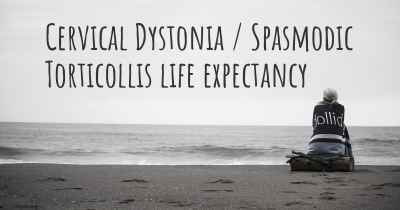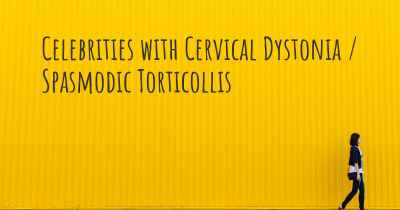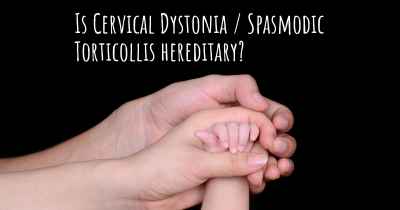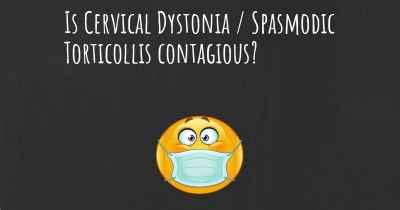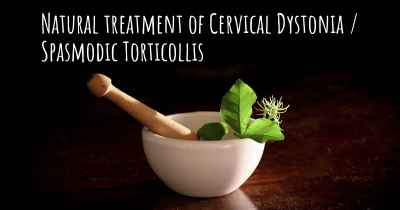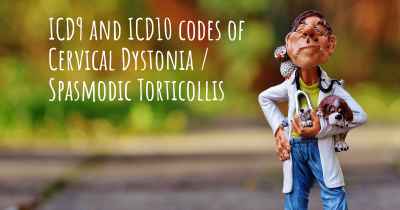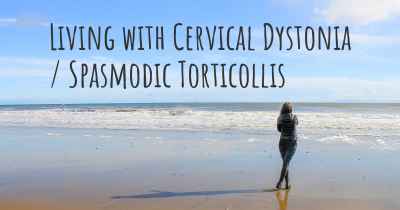Which advice would you give to someone who has just been diagnosed with Cervical Dystonia / Spasmodic Torticollis?
See some advice from people with experience in Cervical Dystonia / Spasmodic Torticollis to people who have just been diagnosed with Cervical Dystonia / Spasmodic Torticollis
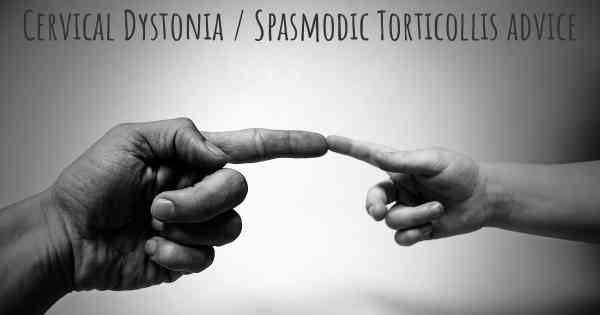
Cervical Dystonia / Spasmodic Torticollis:
Receiving a diagnosis of Cervical Dystonia or Spasmodic Torticollis can be overwhelming and may leave you with many questions and concerns. It is important to remember that you are not alone in this journey. Here are some pieces of advice to help you navigate through this condition:
1. Educate Yourself:
Take the time to learn about Cervical Dystonia and Spasmodic Torticollis. Understanding the condition, its causes, symptoms, and available treatments will empower you to make informed decisions about your health. Consult reliable sources such as medical professionals, reputable websites, and support groups to gather accurate information.
2. Find a Knowledgeable Healthcare Team:
Seek out healthcare professionals who specialize in movement disorders or neurology. They will have the expertise and experience to provide you with the best possible care and treatment options. Building a strong relationship with your healthcare team is crucial for managing your condition effectively.
3. Explore Treatment Options:
Work closely with your healthcare team to develop a personalized treatment plan. Treatment options for Cervical Dystonia and Spasmodic Torticollis may include medications, physical therapy, botulinum toxin injections, and in some cases, surgery. Discuss the potential benefits and risks of each option to determine the most suitable approach for you.
4. Seek Support:
Connecting with others who are going through similar experiences can provide immense emotional support. Join local or online support groups where you can share your concerns, ask questions, and learn from others who have firsthand experience with Cervical Dystonia or Spasmodic Torticollis. Support groups can also provide valuable insights into coping strategies and resources.
5. Prioritize Self-Care:
Living with a chronic condition can be challenging, both physically and emotionally. It is essential to prioritize self-care to maintain your overall well-being. Engage in activities that bring you joy, practice relaxation techniques, and ensure you get enough rest. Taking care of your mental and physical health will positively impact your ability to manage the condition.
6. Communicate Openly:
Effective communication with your healthcare team, family, and friends is vital. Express your concerns, ask questions, and share your experiences openly. This will help others understand your needs and provide the necessary support. Don't hesitate to seek professional counseling if you find it difficult to cope with the emotional aspects of your diagnosis.
7. Stay Positive:
While living with Cervical Dystonia or Spasmodic Torticollis may present challenges, maintaining a positive mindset can make a significant difference. Focus on the aspects of your life that bring you joy and fulfillment. Celebrate small victories and set realistic goals for yourself. Remember, you are more than your diagnosis, and with the right support, you can lead a fulfilling life.
8. Advocate for Yourself:
Be an active participant in your healthcare journey. Stay informed about the latest research and advancements in the field of movement disorders. Advocate for yourself by asking questions, seeking second opinions, and staying involved in decisions regarding your treatment. Your voice matters, and being proactive can lead to better outcomes.
9. Embrace Adaptations:
Cervical Dystonia or Spasmodic Torticollis may require you to make certain adaptations in your daily life. Explore assistive devices, ergonomic modifications, and techniques that can help you manage your symptoms more effectively. Occupational therapists can provide valuable guidance on adapting your environment to accommodate your needs.
10. Stay Hopeful:
Research and medical advancements are continuously being made in the field of movement disorders. Stay hopeful and optimistic about the future. New treatment options may become available, and ongoing research may lead to a better understanding of Cervical Dystonia and Spasmodic Torticollis, ultimately improving the quality of life for those affected.
Remember, this advice is meant to provide general guidance and support. Always consult with your healthcare team for personalized advice and treatment recommendations.
Posted Jul 5, 2021 by TT 3100
